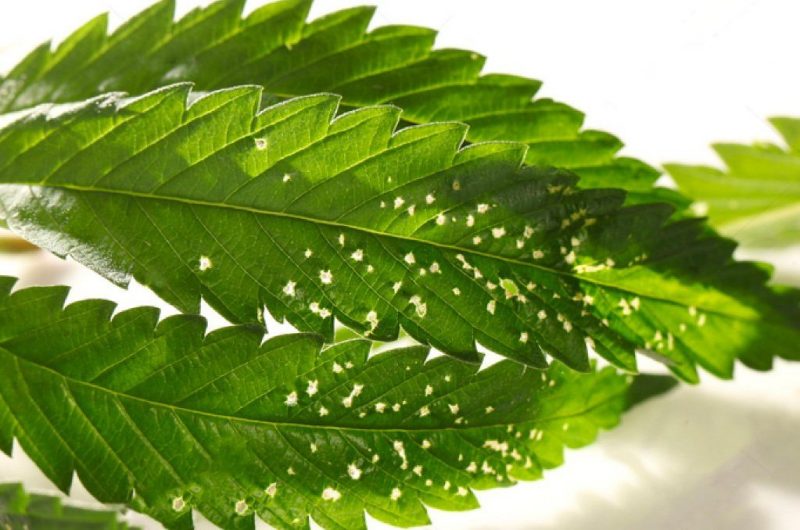🔥 Website for Sale - Contact Us
Despite their tiny size, spider mites can cause huge damage to your cannabis plants. Modern cultivation technology makes treating a spider mite infestation pretty straightforward if caught during the early stages. However, because of their stealthy size, their colonies are only exposed to humans once their damage begins to appear as white spots on the fan leaves.
While the infestation symptoms can closely resemble mildew formation during early stages, spider mite white spots on fan leaves can be easily distinguished by using a 10x magnifier. These relentless tiny worriers are one of the most common cannabis pests and can sneak into your grow room undetected in numerous ways.
They are natural windsurfers that can glide on weak ventilation air streams between grow rooms or simply hitch a ride on your pets from the outside garden. However, the most common way for mites to get into a grow room is with the help of humans. Introducing new plants or clones to your grow room is typically their preferred method to move into a grow room because their presence is only noticed once their colony has reached critical mass.
Today we are looking at how to diagnose spider mite white spots on fan leaves and how to treat the plage in your grow room.
What do Spider Mites Look Like?
Spider mites look like tiny spiders that present themselves as moving dots on fan leaves to the naked eye.
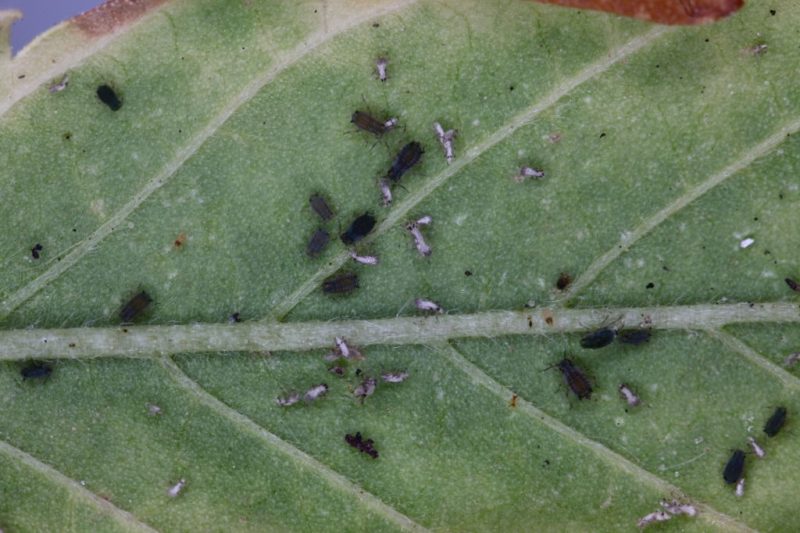
The easiest way to diagnose spider mites is using 10x magnifies to look for spider webs on fan leaves and stems. While spider mites don’t bite humans or pets, their shear colony numbers will suck the life out of any plant.
These pests use their needle-like mouth to suck out plant lifeblood and decimate all tissue in close proximity to the feeding hole. Once their feeding hole is sucked dry, the puncture wound turns yellow to brown.
While these tiny savages are found in all types of climates, they are most comfortable in warmer temperatures making a grow room the ideal ecosystem for them to thrive. Cannabis fan leaves are typically the first place the mites attacks, but if left unchecked they’ll quickly move into the flowers and cause all sorts of health problems for the plant.
When spider mite infestation gets to critical mass inside buds, the pant is pretty much beyond recovery. Once spider mites masses start feeding on flowers, bud rot will quickly set in and destroy the entire yield.
How to prevent a spider mite infestation
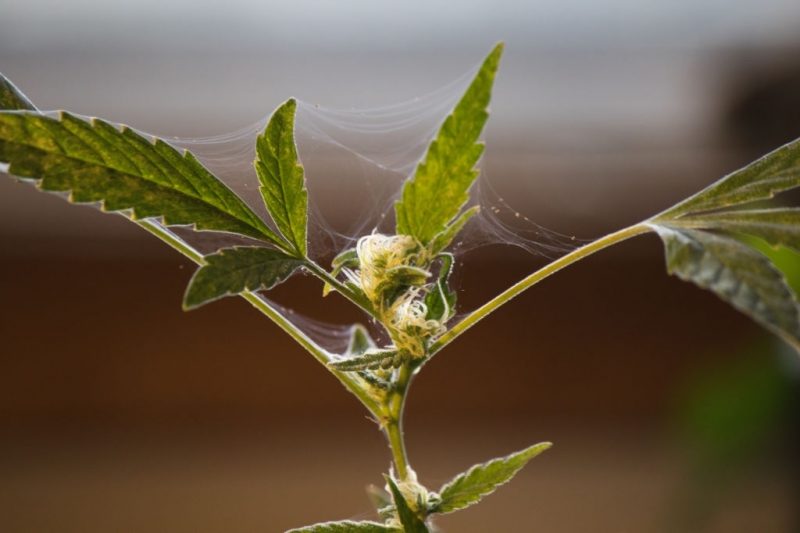
Spider mites reproduce tremendously fast, especially under the perfect climate condition of a grow tent. While there rugged little plant ninjas can survive in most climates on earth, they are most comfortable in temperatures ranging between 25-30°C and humidity lower than 40%. Here is how to increase the relative humidity in grow tent.
At a temperature of 25°C, once spider mite eggs hatch larva can reach adulthood in less than 10 days. When the atmospheric temperature rises to about 30°C the time spider mites take to mature shortens to only 7 days. While the speed at which these mites can grow is alarming, a single female mite can lay more than 160 eggs in its life cycle which calculates to roughly 10 eggs per day.
To find and identify these tiny spider mite eggs on fan leaves, a strong magnifying glass like a “jewelry magnifying glass” is needed. These 0.14mm in diameter eggs start their life cycle as transparent but quickly change color to white or yellow.
While it is reasonable to think that it is better to terminate the entire cannabis crop during a heavy spider mite attack, it can actually be more detrimental for your next crop. The idea is that removing all cannabis plants from a grow room will starve the remaining mites and make to leave the grow tent in search of more feeding grounds.
However, this is not the case. Spider mites are tremendously resilient and can purposefully lower their metabolism once they enter into survival mode. Female mites are known to enter into hibernation once they feel under threat from either plummeting temperature or food resources. These pests can lay dormant for years without feeding and can spring back into an active life as soon as you fill the grow room with plants again.
While this is an admirable survival trade, it makes spider mites a formidable opponent when it comes to eradication efforts.
1. Keep grow room clean
Spider mites love bacteria-filled environments full of dirt and moisture because it creates the perfect reproduction ecosystem. The most effective way to prevent spider mites from moving into your grow room is by keeping the area sterile. With every new crop, cycle disinfect and sterilize all life-supporting equipment inside the grow room such as humidifiers and ventilation systems.
Once your grow environment is squeaky clean, make housekeeping a recurring plant maintenance task which is also helpful to prevent diseases like mildew or mold.
2. Avoid clones from other grow cultivators
The majority of the time spider mites get access to a grow room by getting a free ride on the back of clones. It is best to always use your own clipping or clone plants to prevent cross-contamination.
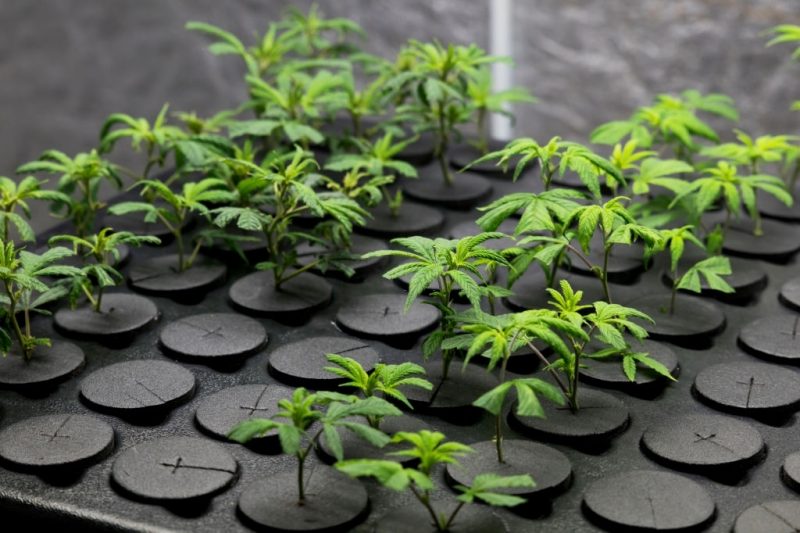
If you have no way other than using clones from other cultivators, it is a good idea to isolate them in a secondary grow tent for a couple of weeks before allowing them to join the crop.
The isolation period allows for plenty of time to examine and treat and mite infestation while protecting your star ladies.
3. Be mindful of yourself
The second most common way for spider mites to sneak into a grow room is by hitching a ride on your pets and on your clothes and hair. If you are hanging out in an outside garden and enter into the grow room later in the day, you might be helping the mites migrate. It is always good practice to take a shower with a fresh change of clothes before you work in a grow room, and even more so if you had outside contact with animals and plants.
Another solution to this problem is a paper sterile suite. If you are regularly dealing with spider mite infestations it might be a good idea to get disposable paper suites that are easy to zip up. If you are taking step-in-suite precautions, it is also a good idea to wear a hair mask.
4. Examine your plants often
Check your plants often with the help of a magnifying glass for any signs of mites. I like to use a jewelry magnifying glass because it is cheap and compact which helps to examine tight areas.

The best place on a cannabis plant to check for the exitance of spider mites is to look for white spots on top or bottom of the fan leaves. While fan leaves are their favorite places to build roots for their new life, they’ll eventually infiltrate the flower buds and suck the life out of them until plant death. I usually examine my indoor ladies every 5 days for any pest or diseases.
5. Letting spider mite predators loose in the grow tent
Apart from human health concerns, treating cannabis plants with pesticides can actually promote spider mite infestation. Treating indoor cannabis with particular pesticides can kill all-natural enemies that feed on spider mites which leaves them to roam unchallenged.
Is always a better idea to treat cannabis pants disease or pest infestation with organic or natural remedies to not upset the natural life order inside to grow room. One tremendously effective way to eradicate spider mite infestation is to introduce the natural enemies of the spider mites in your grow room.
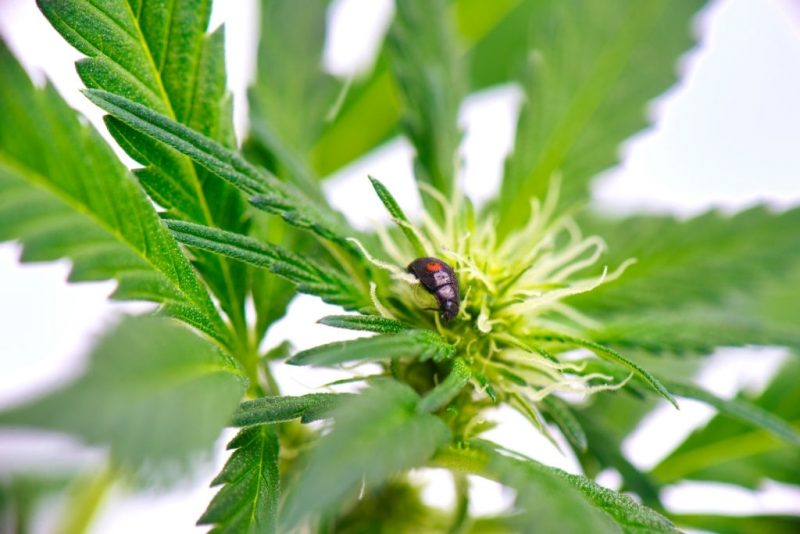
While these predators can be purchased for a reliable cannabis cultivation retailer, ladybugs in the outside garden will quickly slap the bejesus out of the mite colony in your grow tent.
While ladybugs won’t hurt your plants, a single ladybug can devour more than 100 spider mites per day.
6. Other low-cost preventative measures
Another quick trick to control possible spider mite infestation is to use insect traps. Insect traps can be purchased on Amazon or local gardening centers to prevent an outbreak from spiraling out of control. Simply hang all insect traps inside the grow room near openings like ventilation holes and entry doors. It is also a good idea to hand traps in-between plant and overhead.

